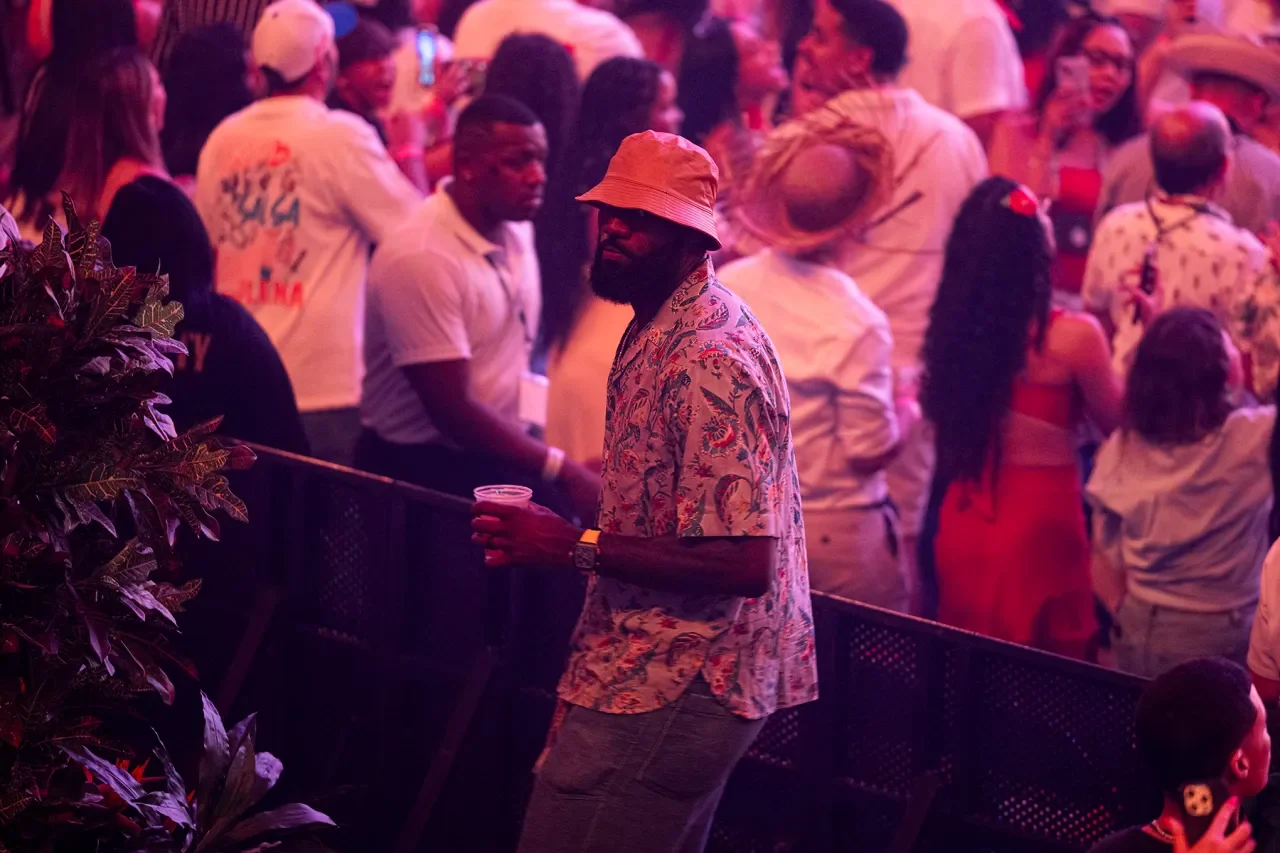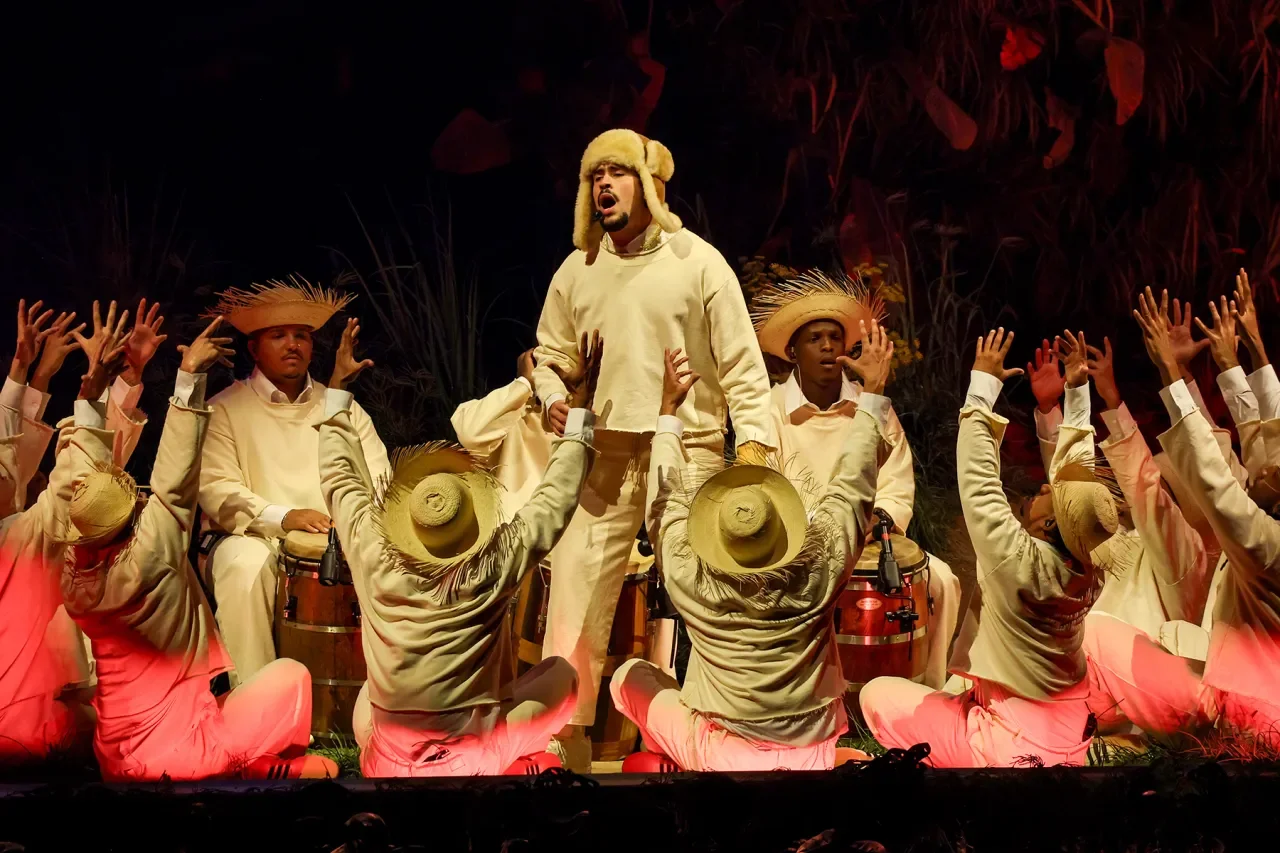No Me Quiero ir de aqui: a love letter to PUERTO RICO
On July 11, 2025, Bad Bunny launched No Me Quiero Ir de Aquí at the José Miguel Agrelot Coliseum in San Juan—affectionately known as El Choli. That night marked the opening of Bad Bunny’s No Me Quiero Ir de Aquí, a 30-date residency that stretched into mid-September and unfolded less like a traditional concert run and more like a months-long cultural festival. Fans didn’t just attend; they returned, reposted, relived. Across TikTok, Instagram, Threads, and Facebook, the hashtag #NoMeQuieroIrDeAquí became a digital passport back to El Choli, carrying millions of impressions that amplified Puerto Rico’s story worldwide.
Under the spotlight of Benito’s stage and the lens of thousands of phones (#NoMeQuieroIrDeAquí exploding across TikTok, Instagram, Threads, Facebook), local designers experienced a renaissance: Yayi Pérez’s guayaberas, Ecliptica Isla pieces like the Taino Reversible Skirt, Hermán Nadal’s cultural motifs, Mónica Santos Gil’s dresses, and Edwin Reyes’s flag skirts all became symbols of identity just as much as style. Styled by Storm Pablo and Marvin Douglas Linares, Benito’s outfits didn’t just echo heritage—they amplified it, turning El Choli—and your feed—into a runway of Puerto Rican pride.
A Global Spotlight from the Start
Lebron having the time of his life
The opening weekend signaled what was to come. On stage, Pedro Capó joined Benito for a nostalgic duet, while Puerto Rican icon Jacobo Morales made a cameo that drew cheers of recognition. In La Casita, LeBron James swayed to the rhythms, his presence underscoring the event’s global pull. From the very first notes, it was clear that this residency was designed to blur boundaries—between Broadway-style spectacle and party de marquesina, between local celebration and international headline, the world was watching.
I Was There: Show #27
By the time I arrived with friends for show #27, the residency had already become legend. My girls’ trip to San Juan was punctuated by the electricity of that night, when Rauw Alejandro appeared as the surprise guest. The arena pulsed as he and Bad Bunny tore through “Party” and “Qué Pasaría,” before debuting the unreleased track “Buenos Términos.” It wasn’t just a performance; it was and is a core memory.
The Stage as Homeland
A Tribute To Jibaros, via Rollingstone.com
What made the residency feel unlike any other live show was its set. Designed by Adrián Martínez (Sturdy), the stage became a living portrait of Puerto Rico: a casita at its heart, a flamboyán tree in bloom, vernacular architecture rising against a mountainous backdrop. The effect was both intimate and monumental, folding the island’s landscapes and traditions into every beat drop. The residency wasn’t just performed in Puerto Rico—it was about Puerto Rico.
The Designers Who Shaped the Residency
The ripple effect across Puerto Rican fashion was immediate. Vogue reported surges in orders for local designers as their pieces appeared on stage:
Yayi Pérez, famed for her crisp guayaberas, updated the classic shirt into sharp, stage-ready shapes.
Ecliptica Isla, the sister-led label by Michelle and Norein Otero, saw its Taíno Reversible Skirt go viral after being worn by RaiNao.
Mónica Santos Gil added sculptural drama with dresses that married art and movement.
Hermán Nadal reworked traditional motifs into looks that blurred couture and heritage.
Edwin Reyes, whose Puerto Rican flag skirt became an instant symbol, fielded custom orders from diaspora fans eager to wear their pride.
Pride, Protest, and Performance
Beyond its visual poetry, the residency spoke in symbols. Traditional costumes, bomba rhythms, and jíbaro aesthetics reminded audiences of the island’s resilience in the face of colonial history. Clothes at No Me Quiero Ir de Aquí were never just clothes. A bomba skirt spinning during a dance break carried the history of resistance. A tee scrawled with independence slogans reminded the diaspora of unfinished struggles.Each night carried the unspoken weight of migration, survival, and joy—themes that connected seamlessly with the diaspora who traveled home just for these shows. It was protest dressed as pride, and pride performed as celebration.
The Brand VillageS Outside El Choli
The “brand villages” weren’t an afterthought—they were part of the pre-show ritual. Hours before doors opened, fans streamed into mini pueblos built by sponsors to shop, snack, and snap photos before heading inside. Visa offered playful airbrush tattoos, Wendy’s Puerto Rico rolled in a food truck with its Tripleta “BB — Bien Boricua” sandwich, and T-Mobile’s Magenta Club gave customers exclusive lounge access. Ritz’s Salty Club functioned like a social hub, while L’Oréal stationed quick-glam booths for makeup touch-ups. For brands, it was an opportunity to meet audiences not just as consumers but as participants in Puerto Rico’s cultural renaissance.
The Economics of Belonging
The impact wasn’t only emotional. Tourism authorities estimate the residency generated nearly $200 million in economic activity. Hotels booked out months in advance; restaurants pulsed with visiting fans; airlines added capacity to meet demand. With travel partners like Vibee bundling tickets and accommodations, No Me Quiero Ir de Aquí became as much a driver of the island’s economy as it was a driver of culture. In Puerto Rico, entertainment became infrastructure.
A Rotating Guest List
Inside, the guest appearances kept fans guessing. Across 30 nights, the stage welcomed Young Miko, Gilberto Santa Rosa, Ivy Queen, Feid, Nicky Jam, Rubén Blades, Ozuna, Luis Fonsi, Vico C, and more. Each surprise added new texture, ensuring no two shows felt the same. For me, Rauw Alejandro’s long-awaited cameo at show #27 was the ultimate crescendo.
Seguimo’ Aquí: Vibee’s Immersive Playground
Beyond the arena, Vibee, Live Nation’s travel and lifestyle arm, built the Seguimo’ Aquí Immersive Experience in San Juan. This wasn’t a merch booth; it was a full-scale installation where fans walked through multi-room environments inspired by Benito’s lyrics and Puerto Rican culture. From photo sets to lounges that echoed the island’s nightlife, the experience extended the residency into the city itself. Paired with hotel packages and VIP upgrades, it turned San Juan into an immersive playground—so that attending the residency wasn’t just about one night, but a weekend woven with fashion, art, and cultural storytelling.
Why It Matters
From the casita on stage to the brand villages outside, from LeBron in the crowd to girls’ trips turned into cultural pilgrimages, No Me Quiero Ir de Aquí proved that a residency can be more than a run of concerts. It can be a reclamation of identity, a boost to local economies, and a global cultural export—Puerto Rico taking center stage, unapologetically, for two unforgettable months.

